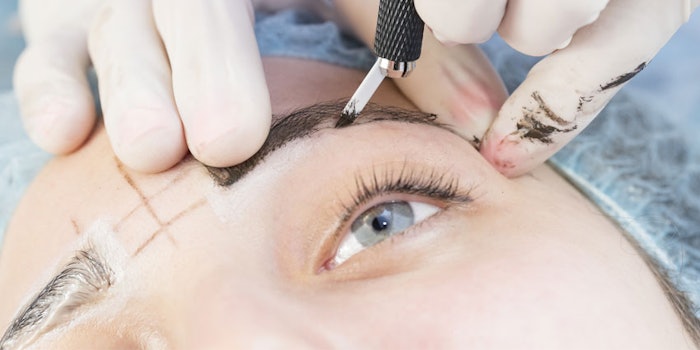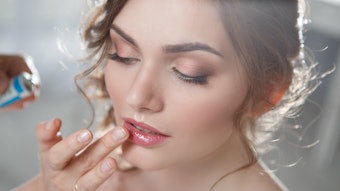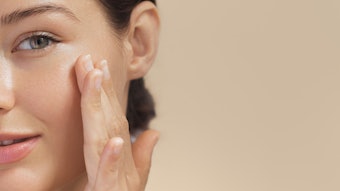
Brows are the new lips—everyone nowadays wants Cara Delevingne-worthy eyebrows, and the market data proves it.
A survey by The NPD Group reported a 28% increase in prestige eyebrow makeup dollar sales in 2014, which accounted for 11% or $122 million of total prestige eye makeup sales. That number is in sharp contrast to the 3% total U.S. prestige makeup market growth in the same time period.
It’s no wonder then that consumers are seeking more permanent options for fuller brows. Microblading is one way to achieve that look.
Microblading involves creating small cuts in the skin and introducing pigments to mimic the look of real hair. The treatment differs from tattooing in that the pigment lasts two years on average with touch-ups and tends to have a more realistic effect than traditional cosmetic tattooing. The pigment is applied using thin blades, not a tattoo machine, which helps to create a more precise, natural look.
Certification
As with most esthetic services, certification varies by state and, in some cases, by city. The American Med Spa Association notes that microblading is regarded as body art in the state of California, and therefore, artists must adhere to the same safety standards concerning bloodborne pathogens and laws as tattoo artists. Whereas, Illinois views microblading as cosmetic tattooing and requires artists to abide by laws defined by the Department of Health.
“The salon must make sure that the practitioner is licensed and trained to perform the service as well as having first-aid and bloodborne pathogens training.” —Kerry Spindler, licensed esthetician and celebrity beauty expert
“Practitioners should offer this service in a sterile room for the client’s comfort—and health—and ours,” said Kerry Spindler, licensed esthetician and celebrity beauty expert. “The salon must make sure that the practitioner is licensed and trained to perform the service as well as having first-aid and bloodborne pathogens training.”
Brow artists should also make sure their insurance coverage includes microblading in the case of an allergic reaction or other contraindications. The Society of Permanent Cosmetic Professionals offers licensing information by state as well as education and social networking events.
Ideal Candidates
Many microblading candidates suffer from the effects of overzealous plucking and waxing that was so in style in the early 2000s (looking at you, Drew Barrymore). For some individuals, years of over-waxing the brows can result in sparse brows that no longer grow.
“I have microbladed clients with absolutely no brow hair to clients who have envy-worthy brows that just want a couple spots filled in to make them perfect.” —Kendra Bray, owner of Better Brows NYC.
Other candidates include cancer survivors, post-menopausal women and individuals who simply want the look of perfect brows without the fuss of brow makeup.
“Microblading is ideal for clients with brows that are sparse, uneven or just desire a different shape,” said Kendra Bray, owner of Better Brows NYC. “I have microbladed clients with absolutely no brow hair to clients who have envy-worthy brows that just want a couple spots filled in to make them perfect.”
Bray notes that, typically, dry skin types retain pigment longer; while oily skin types may not last quite as long.
“Someone can advertise that they are offering microblading, but that doesn’t mean they know what they are doing.” —Kendra Bray
Consultations are key to providing the best experience possible for the client. It goes without saying that consultations should be conducted as a separate appointment prior to the first microblading session and should be extremely thorough to avoid any adverse reactions.
“Microblading is pretty safe for almost everyone, but like everything, there are exceptions,” said Spindler. “The idea is to minimize bleeding, lymph fluids and, of course, scarring.”
Contraindications include:
- Anyone under 18 years of age
- Diabetes
- Pregnant or lactating women
- Glaucoma
- Skin diseases, such as psoriasis, eczema and undiagnosed rashes or blisters on the site that is to be treated
- Allergies to makeup or colors
- Easily triggered post-inflammatory hyperpigmentation
- Certain blood conditions
- Active skin cancer in the area
- Mole in the area
- Hemophilia
- Thyroid medication
- Healing disorders
- Blood thinners
- Uncontrolled high blood pressure or mitral valve disorder
- Taking Accutane or steroids
- Epilepsy
- Keloid scarring
- Alpha hydroxy acids, such as lactic, glycolic, citric, retinoic and tartaric acids, or any over-the-counter creams and lotions for tone correcting, anti-aging, exfoliating and fading can result in discolored pigment
- Flu, cold or post-nasal drip (reschedule when the client is healthier)
- Recent Botox or fillers (wait two weeks after injections)
- Trichotillomania, also called hair pulling disorder
- Shingles
- Recent eye lift/blepharoplasty (wait three to six months for client to be healed fully)
- Poor hygiene
Additionally, be sure to ask about allergies or reactions the client may have to topical anesthetics.
Practice Makes Perfect
When it comes to microblading, the old saying holds true: Practice really does make perfect.
“Not only does the artist need to be certified, but it takes a lot of time to get good at the art, as well as the experience of working with the pigments on different skin types,” added Bray. “Someone can advertise that they are offering microblading, but that doesn’t mean they know what they are doing.”
Consultations are key to providing the best experience possible for the client.
Certification should not be the last step in perfecting the art of microblading. Brow artists should practice as much as possible on latex skin and mannequins prior to practicing on family, friends or clients. Most importantly, obtain training from a reputable institution.
“The most common mistakes are overworking the skin and drawing too many hair strokes,” said Bray. “Too many artists will be too concerned with how the client looks when they leave the first appointment, and not think about how that work will heal in the skin.”
Spindler points out that improper technique can result in the healed pigment to look blurred or ashy. Be sure to take skin thickness into consideration.
Aftercare
Depending on your area, microblading services can retail for up to $1,500. Because of the luxury price tag clients expect the best. This is why proper aftercare is an integral part of getting and maintaining the desired look.
“Keeping [the eyebrows] clean, moist and bacteria-free is crucial in the first three weeks,” said Spindler. “It isn’t a challenging process, but more of a mindful one.”
Spindler adds that clients should not apply skin care products to the area and use a clean pillowcase each night to help keep the area sanitary. Aquaphor or petroleum jelly is also helpful in healing and occluding the brow area.
Print out aftercare instructions for clients to take home with them and be clear in your instructions. Additionally, follow-up appointments should be made 30 days after the initial microblading appointment for any necessary touch-ups, with additional touch-up appointments in six-month intervals for up to two years depending on the client.
Microblading in Your Practice
While microblading is not suitable for every client, the relatively new service is as in demand as ever. The right tools and education can make microblading a lucrative addition to your esthetic practice. Institutions such as 3D Brows Academy, Occhi Lash & Brow Studio & Training and PhiBrows are just a few of the organizations that provide microblading training.










